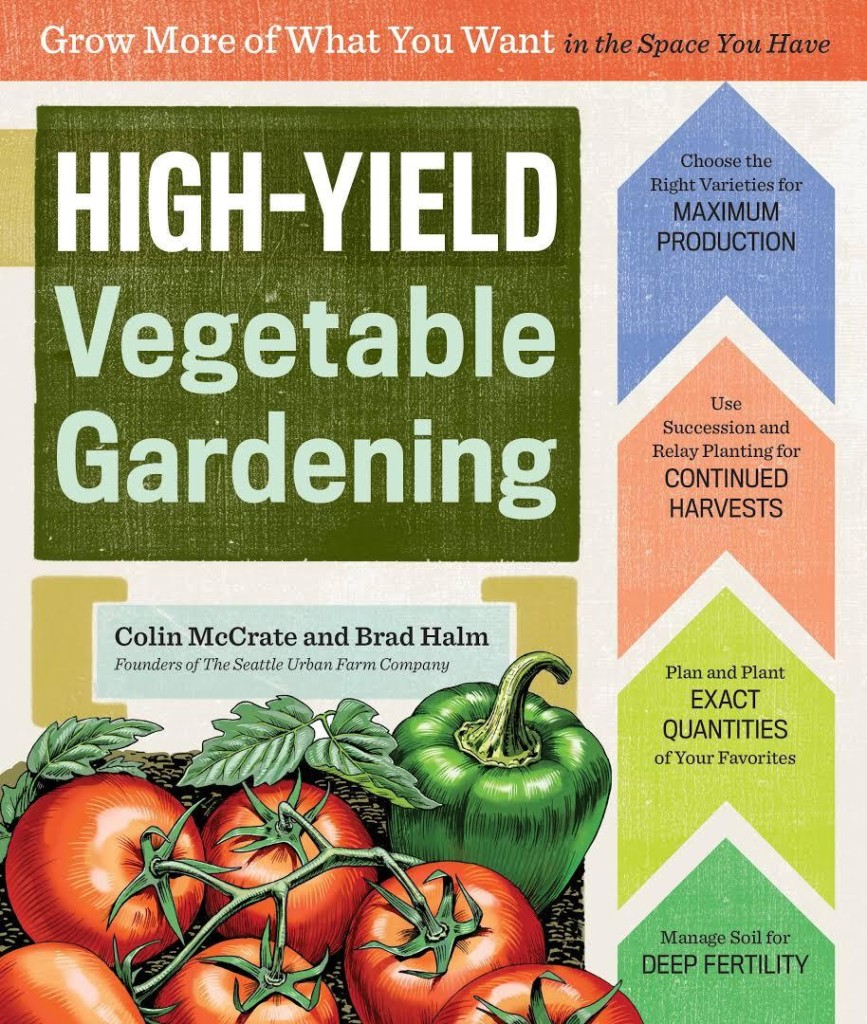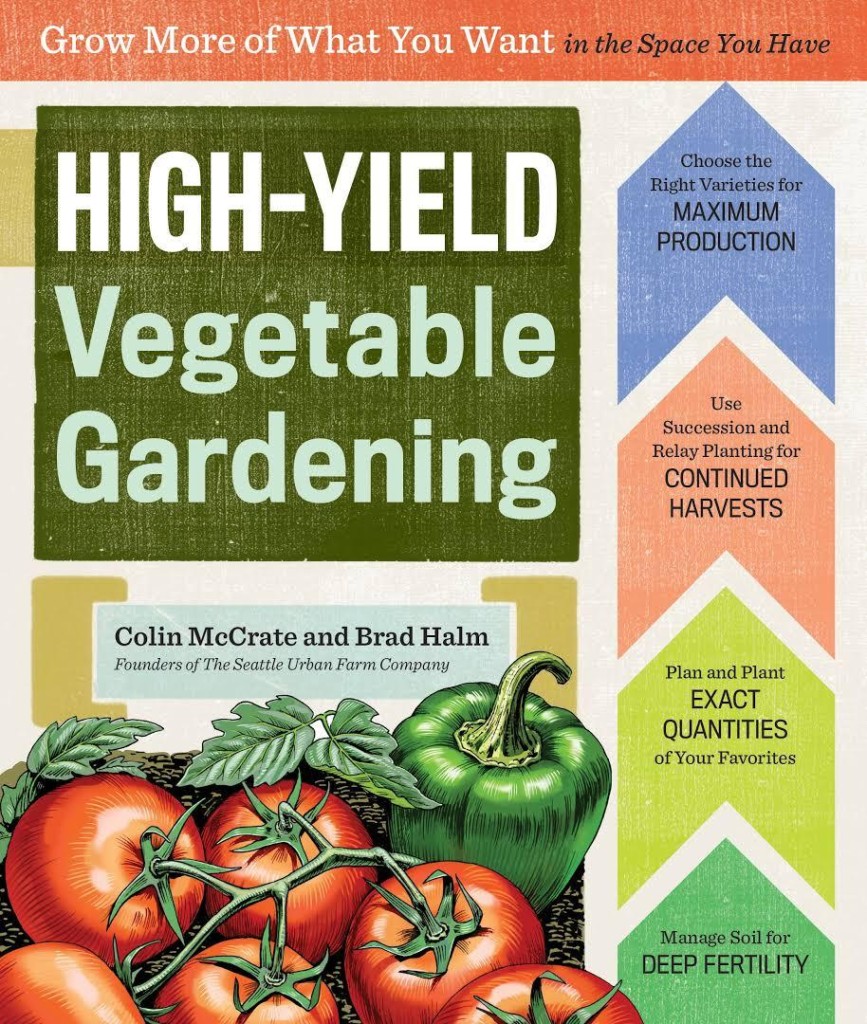 This book is intended for home gardeners who value efficiency and productivity. The authors, founders of the Seattle Urban Farm Company, explain techniques used by biointensive farmers and how to adapt these techniques for any size of garden. This professional help will assist gardeners to extend the season, increase yields, maintain healthy soils and deal with pests and other problems. This is not a beginner book telling you how to grow carrots (or any other crop). It will give you the information to choose the variety of carrot best suited to your goals, figure out how much land to put into carrots for the harvest you want, when to plant them, how to get maximum yields and how to have a continuous supply. It is not a book on marketing either. I want to set that out clearly, so no-one buys the book wanting something that it’s not. It’s a very good book if you want to “up your game” and get full potential from the land you have and the time you have available to spend working it.
This book is intended for home gardeners who value efficiency and productivity. The authors, founders of the Seattle Urban Farm Company, explain techniques used by biointensive farmers and how to adapt these techniques for any size of garden. This professional help will assist gardeners to extend the season, increase yields, maintain healthy soils and deal with pests and other problems. This is not a beginner book telling you how to grow carrots (or any other crop). It will give you the information to choose the variety of carrot best suited to your goals, figure out how much land to put into carrots for the harvest you want, when to plant them, how to get maximum yields and how to have a continuous supply. It is not a book on marketing either. I want to set that out clearly, so no-one buys the book wanting something that it’s not. It’s a very good book if you want to “up your game” and get full potential from the land you have and the time you have available to spend working it.
This 7″ x 9″ spiral bound lay-flat book has 320 pages, including the index and resources section. The cover price is $18.95. It is illustrated with black and white drawings rather than photos, and has green spot color for headings and special sections. This gives an old-fashioned air to the book, until you come upon a drawing of a smart phone. There is nothing old-fashioned about the planning charts and spreadsheets.
After a poor start, on page 222 the gender ratio of the gardeners pictured starts to even up, and ends up close to the national average of 30% of farmers being female. https://www.agcensus.usda.gov/Publications/2007/Online_Highlights/Fact_Sheets/Demographics/women.pdf
The book opens with three examples of high-yield gardens: A typical city lot of 5000 sq ft (including the space occupied by the house); a quarter-acre in the suburbs; and a rural one-acre plot. The authors discuss how to make a garden map and determine which factors influence how you use the site (shade for instance), and what your priorities are. They advocate for standard size raised beds in order to simplify planning and to reuse materials like row cover, netting or drip tape.
There are tables of crop spacing and scheduling for 60 annual vegetables and herbs, about 20 perennial vegetables and fruits and 20 perennial herbs. There is a worksheet to help you calculate how much of each crop to aim for, based on the average serving size, depending on your tastes, whether that’s non-stop arugula, tomatoes for canning or a large amount of carrots for a farmer wedding. Some of the charts can be downloaded from the Seattle Urban Farm Company’s website www.seattleurbanfarmco.com. There is a table of yields and one of planting dates, working from your own frost dates. There is a Planting Calendar Worksheet blank you can copy and use for each crop you plan to grow.
There are clear instructions on designing a crop rotation, including a chart of crop height, life span and fertility needs. They discuss practical limitations that might lead you towards either two rotations within your garden, or a separate rotation for the greenhouse. They urge you to keep good clear records. (Oh so important! Who has time to make the same mistake twice in farming?).
There is a Seed Order Worksheet, and a clear description of the word “hybrid” which has sometimes become a bad word among some gardeners who misunderstand the plant breeding work of the past century or so, and how it has brought us high-yielding, disease-resistant varieties, which are a boon to gardeners wanting high yields. Sure, you can’t save your own seed from hybrids and have it grow true, but who realistically grows all their own seed? So many crops cross with each other; sometimes seed-saving conflicts with getting food from that planting; Seed-growing and selecting is a skilled job. Seed companies can do that work for us. I do grow a few seed crops, so I know what is involved. But I also grow many hybrids, and am grateful for them.
In a couple of places the drawing isn’t as good as a photo would be. The Jericho and Winter Density lettuces don’t look so different, and you couldn’t tell the size difference. The high tunnel (hoophouse) inflation blower tubing drawing on p 263 looks very strange to me, like maybe the artist has never seen a real one, and worked from a description.
There is a chart of seed longevity, a subject not always covered in gardening books. There is an excellent chapter on soil tests and interpreting them, which is very down-to-earth. (“We determined this to be about 75 and 50 pounds per 1000 sq ft.”) Nice and user-friendly, it won’t blind you with science. There is another good chapter on irrigation systems, a subject often ignored in backyard gardening books. “Because we strongly believe that hand watering a large, diversified garden site is an inefficient use of time and resources, we won’t even include it as a viable option for garden irrigation.” “Spending valuable hours trailing a hose through the garden is, at best, a poor use of your time.” Absolutely!
Setting up spaces to start seedlings and keeping them well-lit and watered is clearly explained. So is the subject of small greenhouses. The drawing includes the 1970’s craze of lining the back wall with black barrels of water, although the authors do point out that such devices can help, but will not be enough to warm the air to seed germination temperatures. In my opinion, the space given over to big barrels of water would be better given to more plants and the need for heat addressed in other ways!
There is a chapter on starting seedlings and planning for that on a large scale. It includes tips not found everywhere, such as when to sow rootstock and scion varieties for grafting tomatoes, starting cuttings, growing microgreens and hand pollinating. Planting depth is covered, including laying tall tomato plants in a small trench and planting brassicas up to the lowest leaves, rather than the same height as in the seed flat. There are recipes for mixing your own organic fertilizers, and which plants will respond most to extra nutrients. There are tables of organic management strategies for pests and diseases.
Compost-making is discussed, along with a table of Carbon:Nitrogen ratios of various compost ingredients. There is a table of cold-hardy salad crops and information about building low tunnels, caterpillar tunnels and basic types of small hoophouses for cold-weather growing. If you are planning a big hoophouse, I’d recommend getting more information than in this book. There is a chapter on harvesting, washing and storage.
As you’ve probably gathered by now, this is a book full of valuable charts. If you are a grower who doesn’t want to work with spreadsheets, you can easily print off the Seattle Urban Farm Company’s worksheets and use those. Or take the spreadsheets and run. Either way, this is a valuable book for serious backyard growers.







